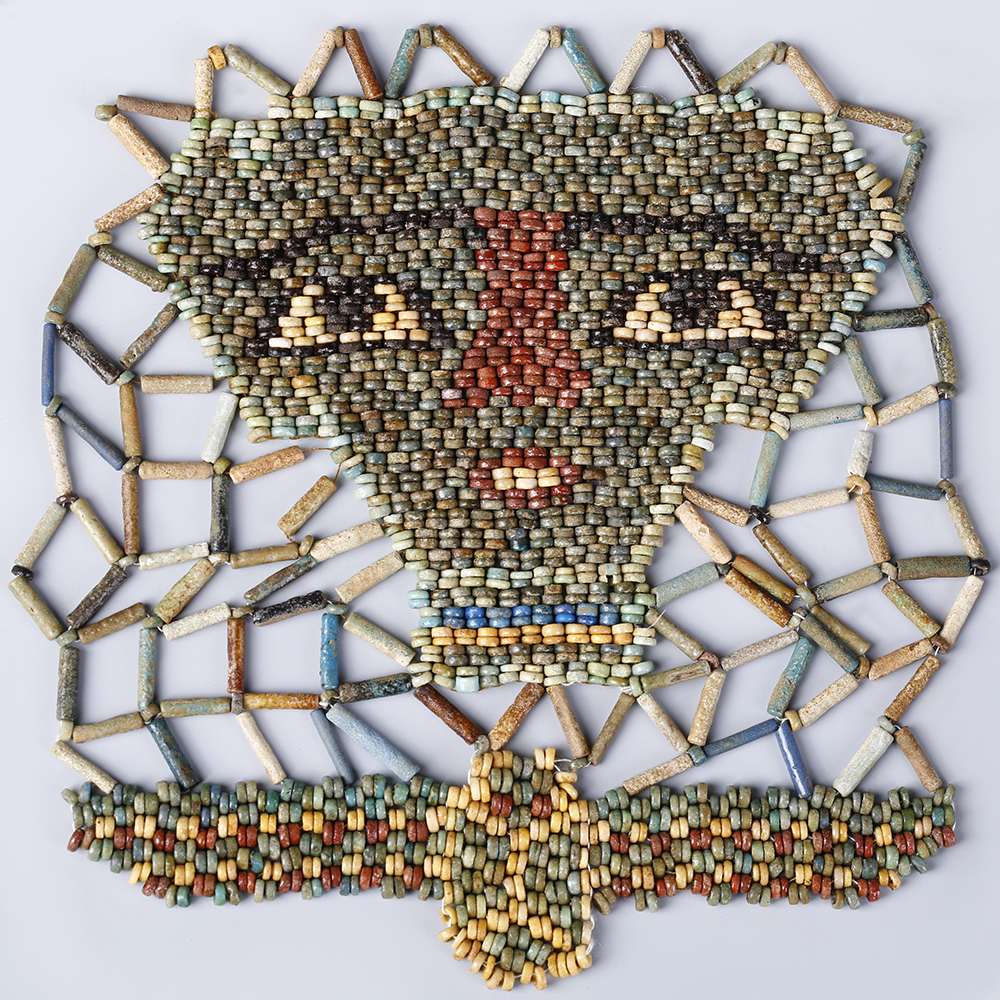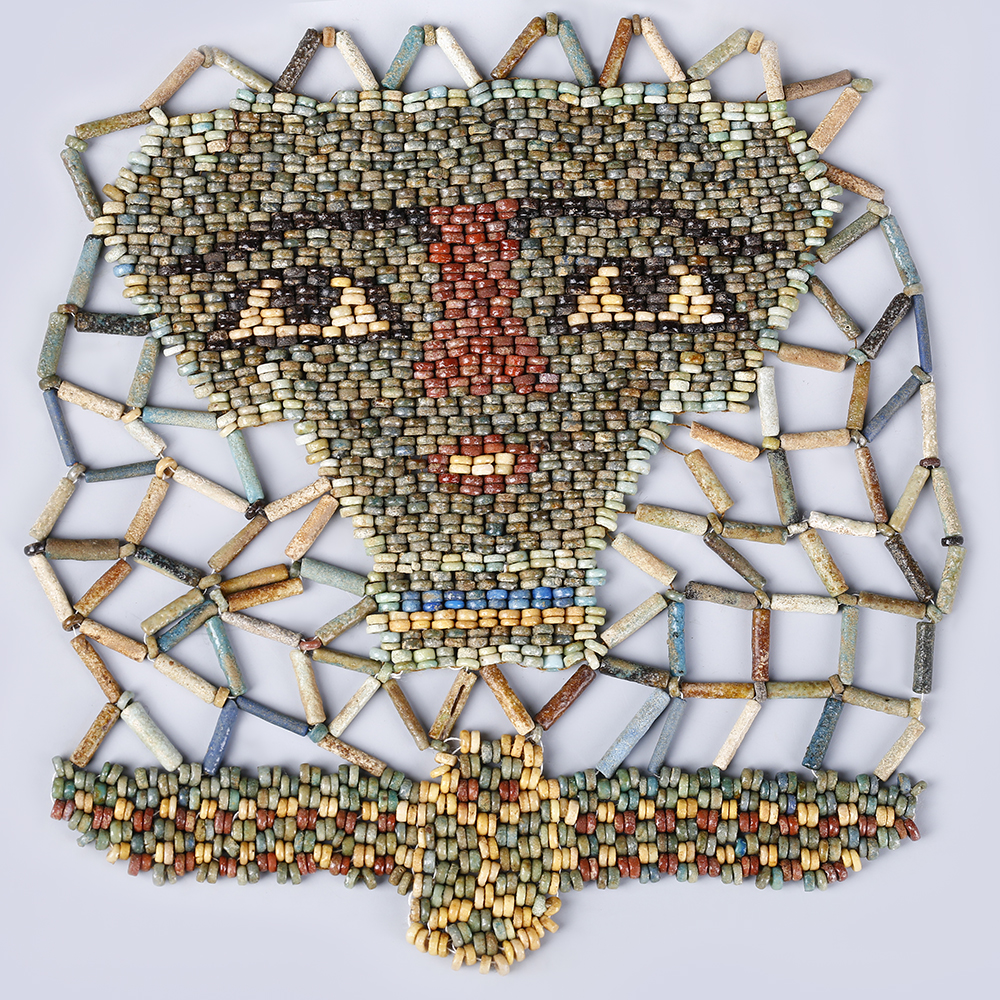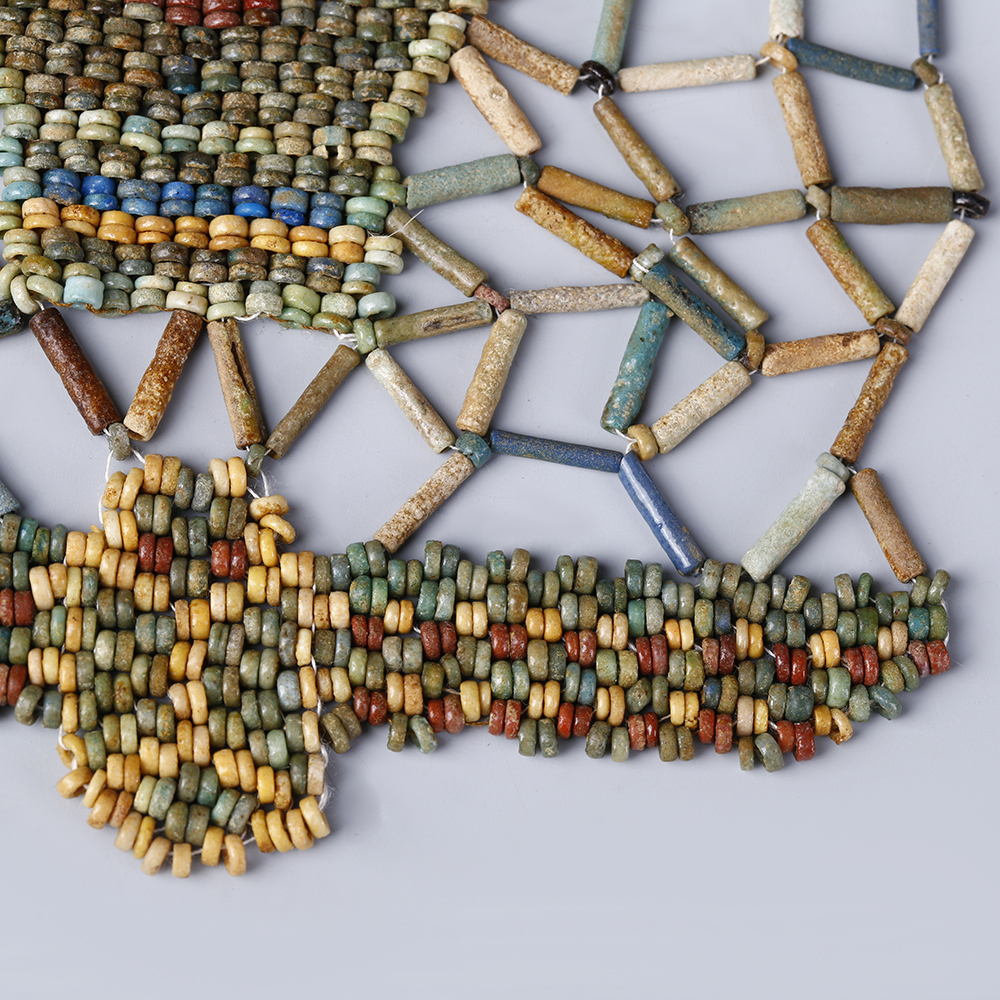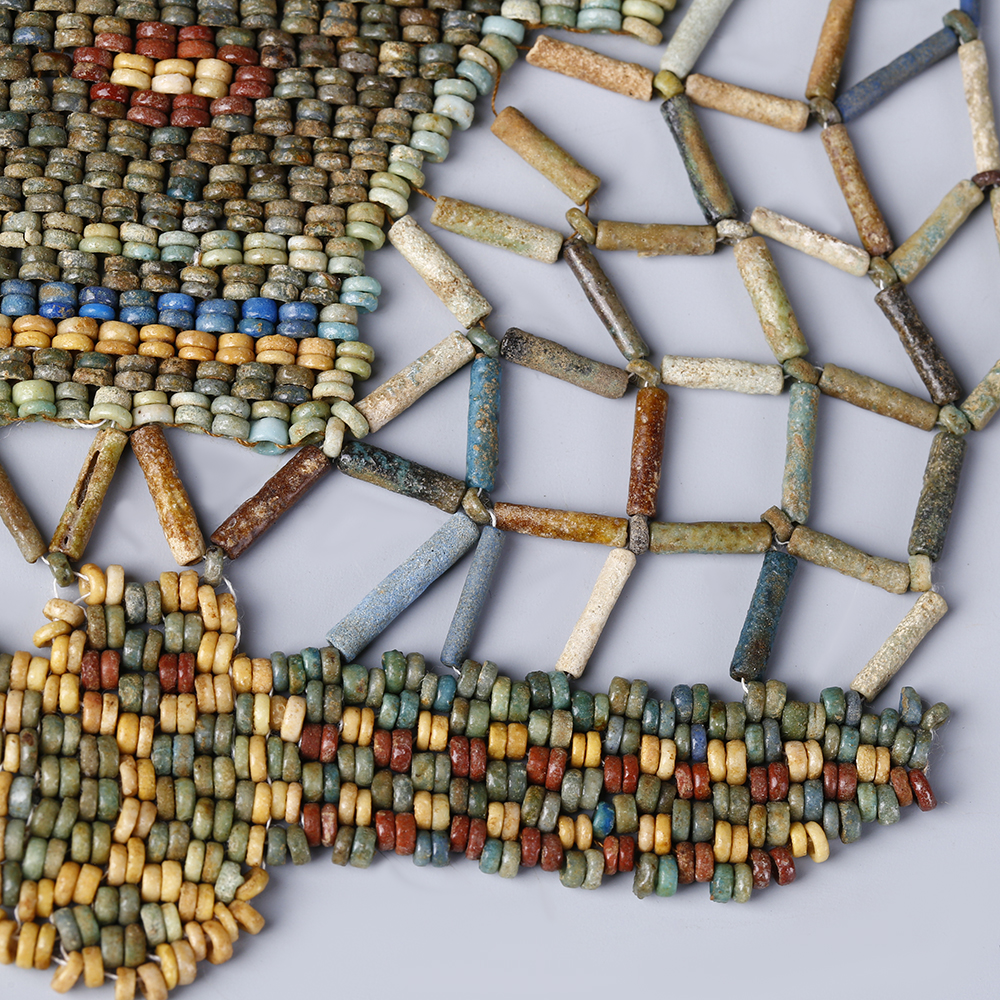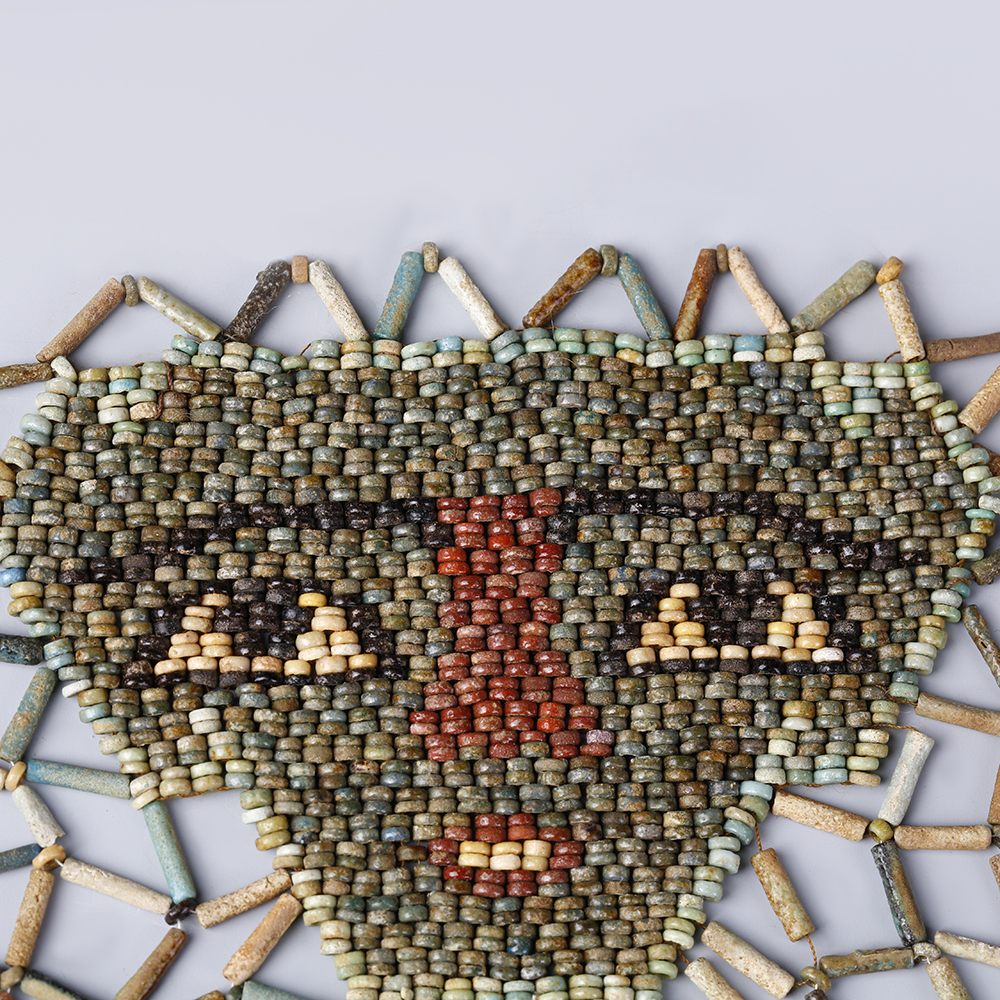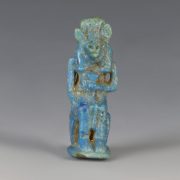Masks of this type rose to popularity in the Late Period of Ancient Egypt. They likely had both a decorative and symbolic role, as the burial of the dead in Ancient Egypt was an elaborate and ritualised process. Their unnaturalistic style and the similarities between beaded mummy masks in general make it unlikely that they were modelled after the face of the deceased individual; they seem to have more likely been generic images of a dead human face as the absence of expression and the blue-greenish skin complexion could indicate. However, such masks have also been interpreted as visual representations of the god Osiris – himself also a dead being – frequently depicted in the tombs with an identical skin-colour. Winged scarabs were usually modelled in faience and placed as pectoral embellishment on the chest of the mummy. In this case, the scarab, symbol of re-birth and regeneration, has been sewed together with the mummy mask.
Ancient Egyptian Beaded Mummy Mask with Winged Scarab
$715.62
A fine Egyptian mummy mask made of small faience beads, restrung in their original arrangement. Green, dark blue, red and cream tones have been used to render in a highly stylised manner a human face with a neutral expression. The large trapezoid eyes, long thin eyebrows, broad nose and small mouth are arranged in a perfectly symmetrical manner. The mask is enriched by a beaded composition forming a winged scarab, rendered in multicoloured faience beads. Elongated faience beads frame the composition. Such mask would have been placed over the face of the deceased at their burial, in a similar manner to the better-known cartonnage mummy masks, mostly for decorative or protective purposes.
Period: Late Dynastic Period
Provenance: From Mariaud de Serres collection, Paris 1980-90s.
Condition: Extremely fine, restrung.
SOLD
| Culture | |
|---|---|
| Egyptian Mythology | |
| Faience | Black Faience, Blue Faience, Green Faience, Red Faience, Turquoise Faience, White Faience, Yellow Faience |
| Region |
